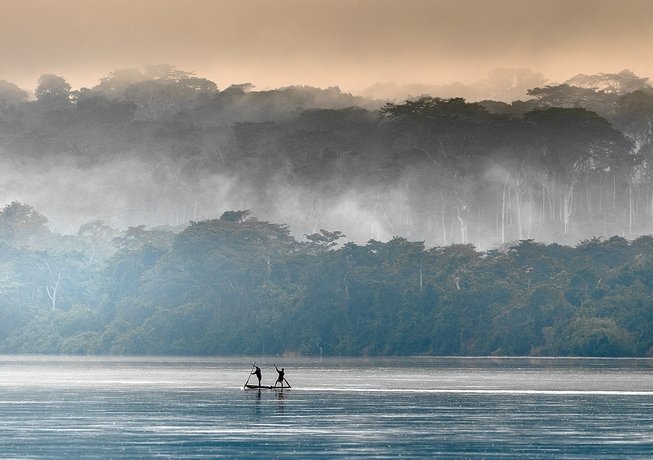The Congo River, with its mysterious depths and dense rainforests, has long captured the imagination of writers, historians, and explorers. In this blog post, we delve into why the Congo River is often referred to as the “Heart of Darkness” in literature and history, exploring the complex narratives and enduring symbolism that have shaped its portrayal.

The Enigmatic Allure of the Congo River
The Congo River, coursing through the heart of Africa, has been a source of intrigue and fascination for centuries. Its towering trees, impenetrable jungles, and the mysteries concealed within its depths have inspired explorers and writers alike.
1. Conrad’s “Heart of Darkness”: A Literary Masterpiece
A Journey into the Unknown
Joseph Conrad’s novella “Heart of Darkness,” published in 1899, is a seminal work that has left an indelible mark on literature. Set in the backdrop of the Congo Free State during the late 19th century, the novella tells the story of Charles Marlow’s voyage up the Congo River in search of the enigmatic ivory trader, Kurtz.
2. The Darkness Within: Themes and Symbolism
Colonialism and Imperialism
“Heart of Darkness” serves as a critique of European colonialism and the inherent darkness it brought to Africa. The Congo River is portrayed as a metaphor for the moral and psychological darkness that engulfed European explorers and traders.
3. Historical Context: The Belgian Congo
The Horrors of Leopold’s Regime
Conrad’s novella was influenced by the brutal reign of King Leopold II of Belgium in the Congo Free State. The river becomes a symbol of the exploitation, suffering, and death inflicted upon the Congolese people during this dark period of history.
4. Beyond Conrad: The Congo in Literature
Literary Influence
Conrad’s work paved the way for other authors to explore the Congo River in their own writings. Writers like V.S. Naipaul, Chinua Achebe, and Barbara Kingsolver have delved into the river’s complex history and the impact of colonialism.
5. Exploration and the Quest for Knowledge
European Expeditions
The Congo River’s allure extended beyond literature. European explorers like Henry Morton Stanley ventured into its depths, leading to increased interest in the region’s geography and resources.
6. The Paradox of Beauty and Darkness
Natural Riches and Environmental Challenges
The Congo River basin is renowned for its biodiversity and natural beauty, yet it faces environmental challenges, including deforestation and habitat loss. This paradox of beauty and darkness continues to shape its perception.
7. Modern Interpretations
Contemporary Literature and Films
In the modern era, literature and films continue to explore the Congo River’s complex legacy. Works like Adam Hochschild’s “King Leopold’s Ghost” and the film adaptation of “Heart of Darkness” offer new perspectives on its history.
8. Shifting Narratives: From Darkness to Resilience
Reclaiming Identity
In recent years, African authors and scholars have worked to shift the narrative surrounding the Congo River, emphasizing resilience, cultural richness, and the potential for sustainable development.
Conclusion: A River of Contrasts
The Congo River remains a powerful symbol, evoking contrasting images of beauty and darkness, exploration and exploitation. Its portrayal in literature and history reflects the complexity of Africa’s past and the ongoing efforts to reclaim its narrative. As we navigate the depths of the “Heart of Darkness,” we uncover not only the shadows of the past but also the resilience and strength of the people who call its banks home.




